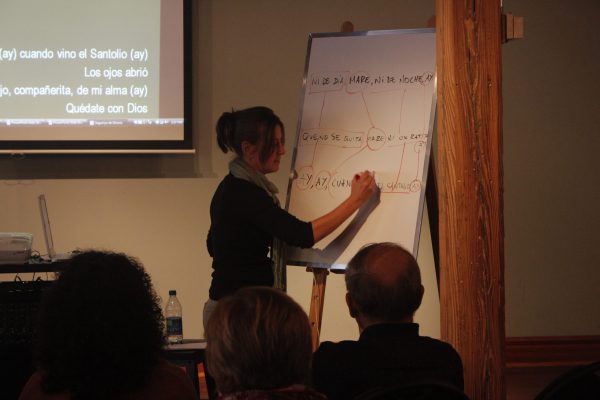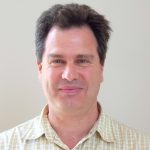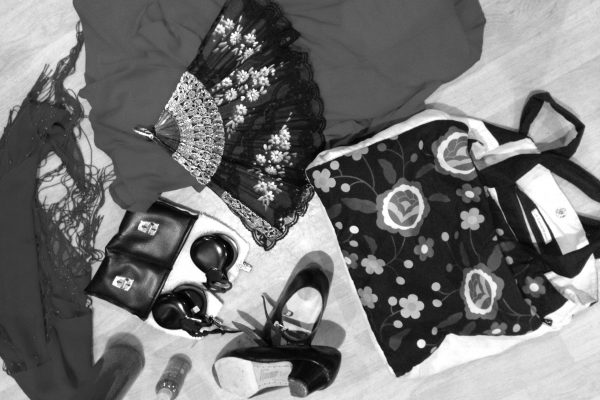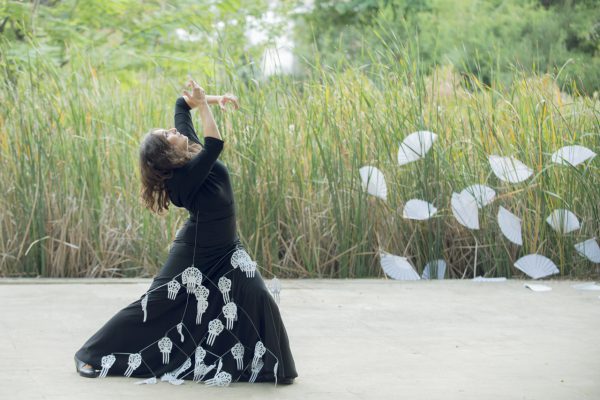“But what I understand by purity is each person’s authenticity. Let’s just say that the audience doesn’t need prior information about whether you’re more avant-garde or more flamenco … Purity is what comes out from within … Each person, each artist creates his own flamenco.”
(Israel Galván interview, 2005, flamenco-world.com)
I first had the chance to watch Israel Galván perform in 2005 when La Edad de Oro premiered at the Festival de Jerez in Jerez de la Frontera, Spain. I suppose my experience was as clichéd as it could get for a Canadian travelling to Spain in pursuit of her flamenco dreams: a late-night show in the intimate setting of an old church-turned-theatre set against a backdrop of the narrow, winding streets of this magical Andalusian town. But Israel’s performance was anything but clichéd that night. I remember being captivated by his attention to detail, commitment to movement and unexpected energy shifts and choreographic choices. He has since had a profound impact on me as an artist, triggering an ongoing interest in questioning the boundaries of flamenco dance.
I had several other chances to watch Israel perform and even study with him at the festival in Spain in subsequent years. I remember standing in a bar next to the theatre after seeing one of his shows, with a manchego cheese sandwich drenched in anchovies and olive oil in one hand and a glass of sherry in the other, overhearing an old man’s conversation next to me. The old man — whom I had earlier watched angrily walk out of Israel’s show — voiced his disgust over the evening’s performance, describing it as too intellectual and rigid and lacking in emotion. He was clearly offended. And that’s not the last time I would experience someone take offence to Israel’s work.
For flamenco purists, Israel’s work can be a hot topic of discussion, raising questions about definitions of flamenco and creative freedom within a structured form so rooted in tradition. Based on what I’ve learned about Israel, his intention is not to purposely be different or innovative, but instead to create sincerely, based on his deep devotion to the flamenco tradition. The idea of authenticity is central to Israel’s work. As authenticity is critical to any art practice, his approach inadvertently opens the doors to the possibilities of flamenco dance as an art form, beyond just folkloric or cultural representation. His work becomes a necessary demonstration of how authenticity can find space within a traditional art form.
I was excited to learn that Israel was returning to Canada, this time adding stops in Vancouver, Toronto and Ottawa, in addition to a return to Montréal. I believe there is room for growth for flamenco dance in Canada, and I think audiences here have much to gain from exposure to approaches to flamenco dance like Israel’s. This type of work raises questions and challenges expectations, which eventually leads to an audience that begins to ask more questions. These are the steps toward an improved critical dialogue regarding flamenco dance in Canada, which is absolutely necessary for the art form and the practising artists here to have space to grow, and for flamenco to gain an increasingly informed recognition within the Canadian dance landscape.
La Edad de Oro is a seemingly simple show that honours the trinity of song, guitar and dance, which is at the root of the flamenco tradition, while propelling the audience into the complexity of Israel’s approach to flamenco dance. Yes, as a performer, Israel deserves to be hailed for his technical mastery, musicality and precision in movement, and his work can justifiably be described as innovative, avant-garde and genius. Whether or not an audience likes Israel’s work I don’t think matters. What I do think is most important to take away from Israel’s performances is his courage to work comfortably with risk and boldly carve out his own unique artistic path. I wish more flamenco artists did the same.
I remember Israel as a seemingly quiet, unassuming man with a slight stutter and air of shyness and humility about him, who walked into class one day at the Festival de Jerez, appearing uneasy as his students applauded his performance from the previous night. I saw an artist then who showed traces of vulnerability matched with a strong artistic voice and need for personal expression. In that moment, I began to uncover my flamenco. And everything changed.
Calgary flamenco artist Rosanna Terracciano was invited by the Vancouver International Dance Festival to share her thoughts on Israel Galván for his March 22 & 23 performances of Edad de Oro at the Vancouver Playhouse. We share them here with kind permission. Galván performs at the National Arts Centre in Ottawa on March 18, at Koerner Hall in Toronto on March 29 and at Place des Arts in Montréal on March 30.
Tagged: Flamenco, Israel Galván, On the Ground, Touring, National , Vancouver




